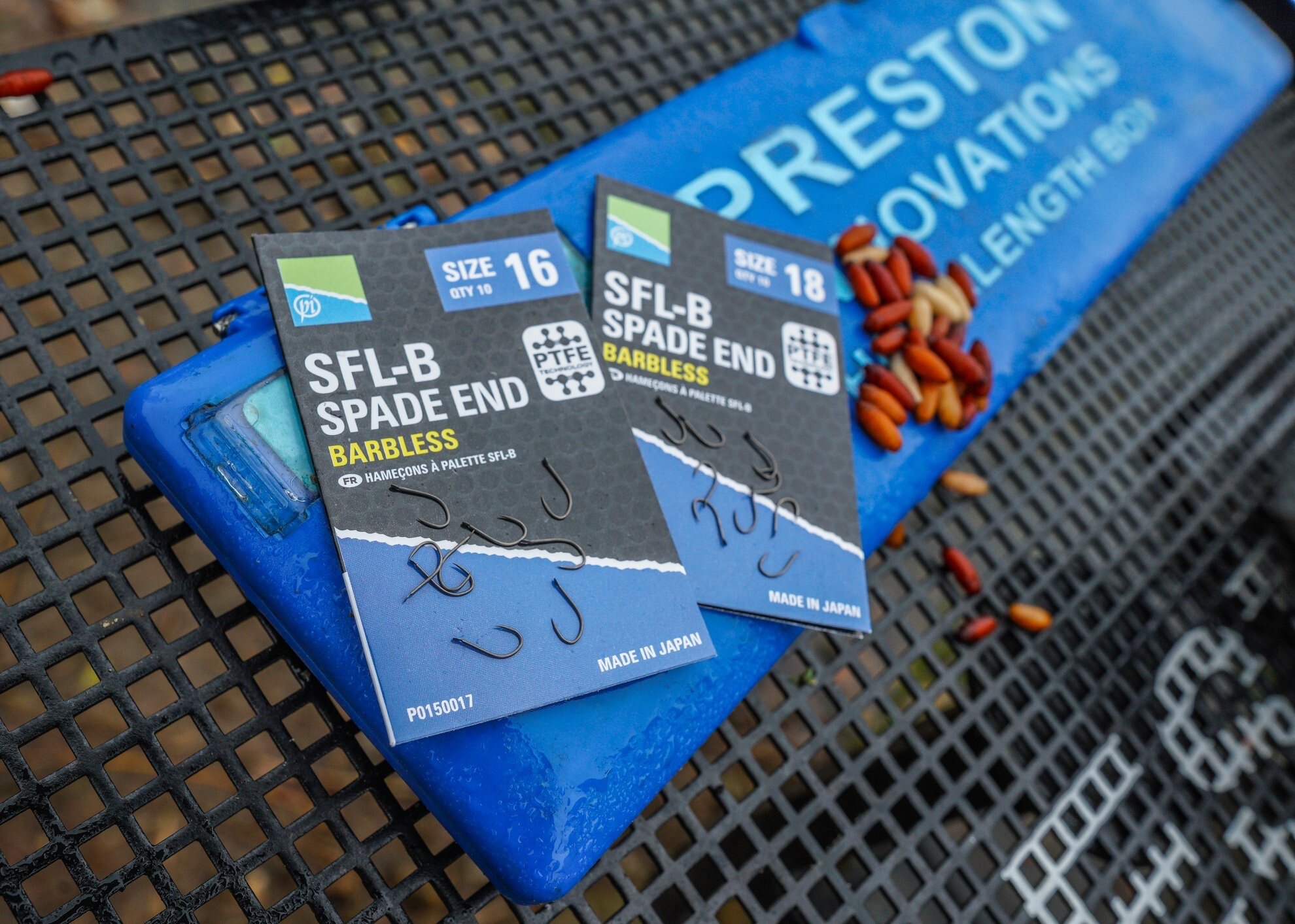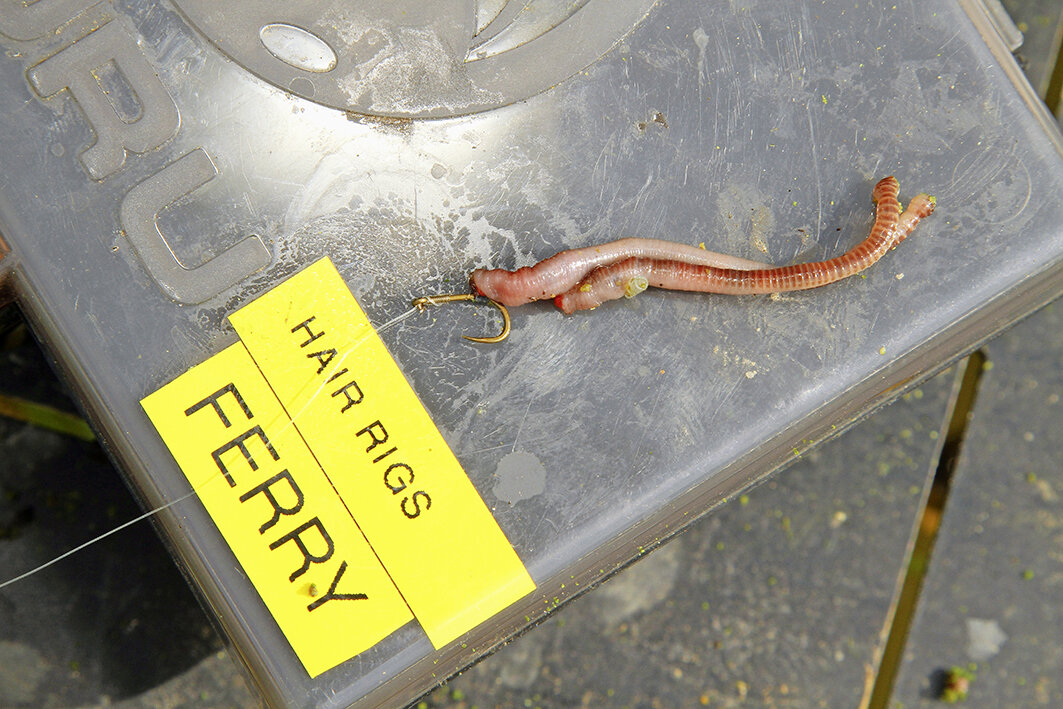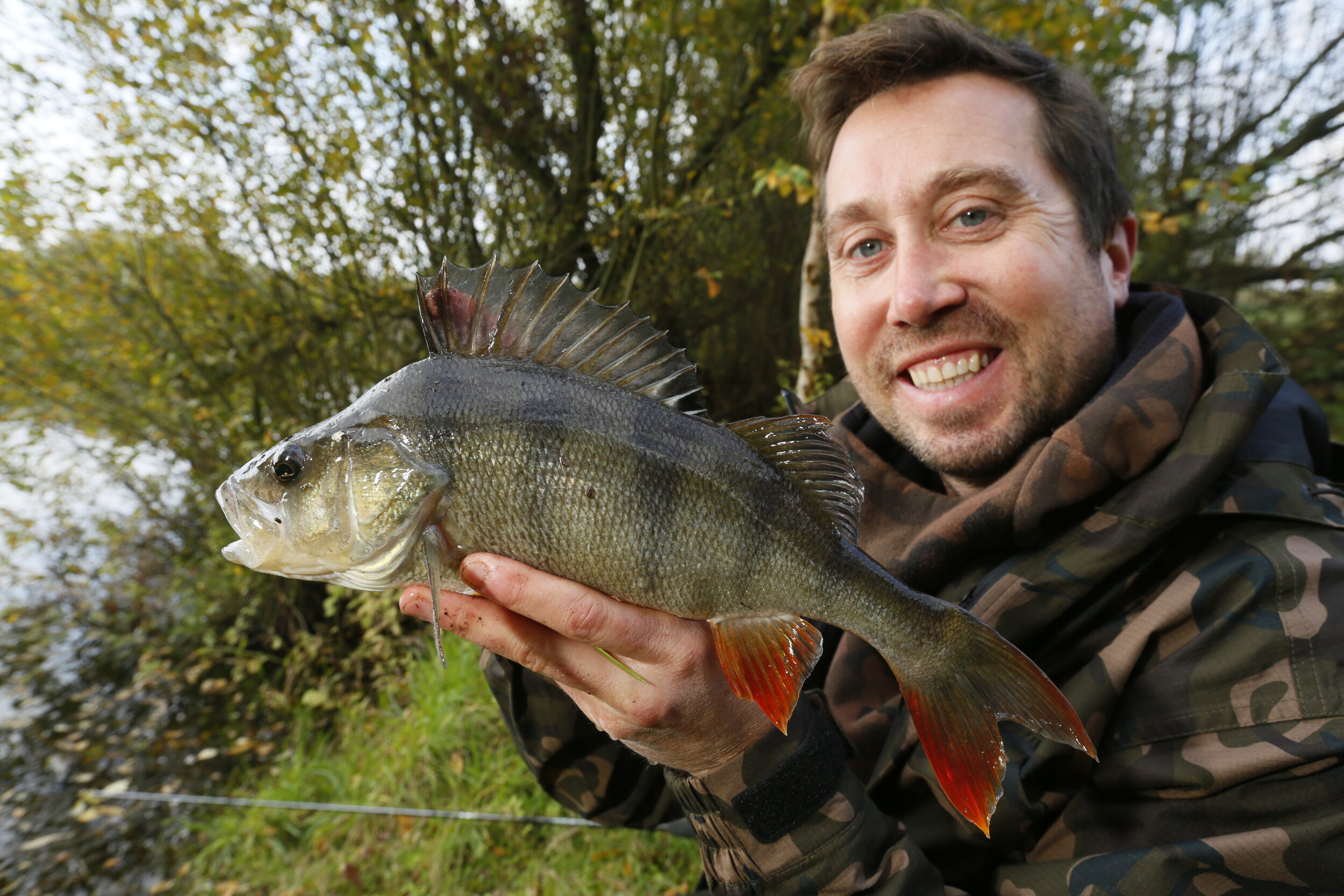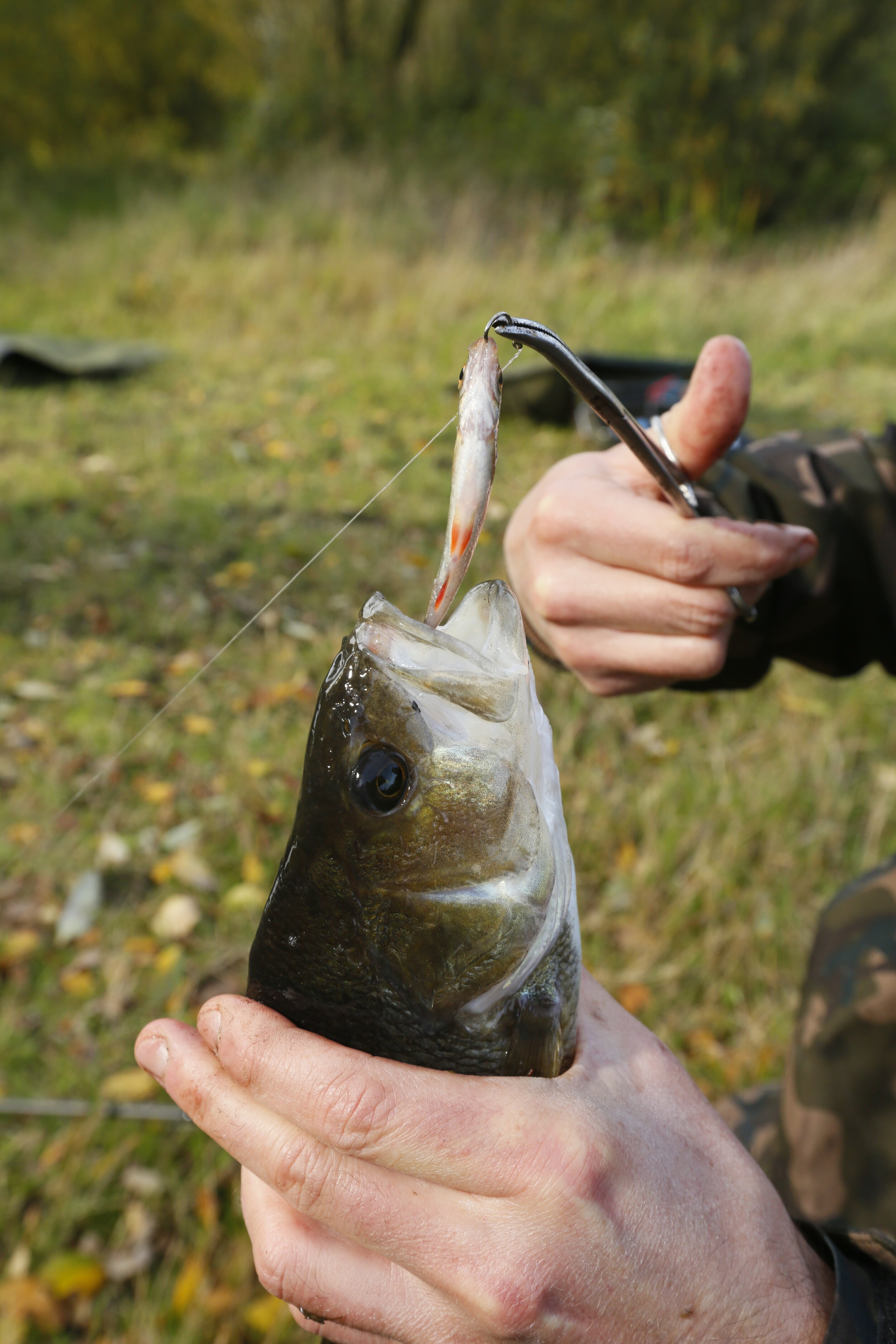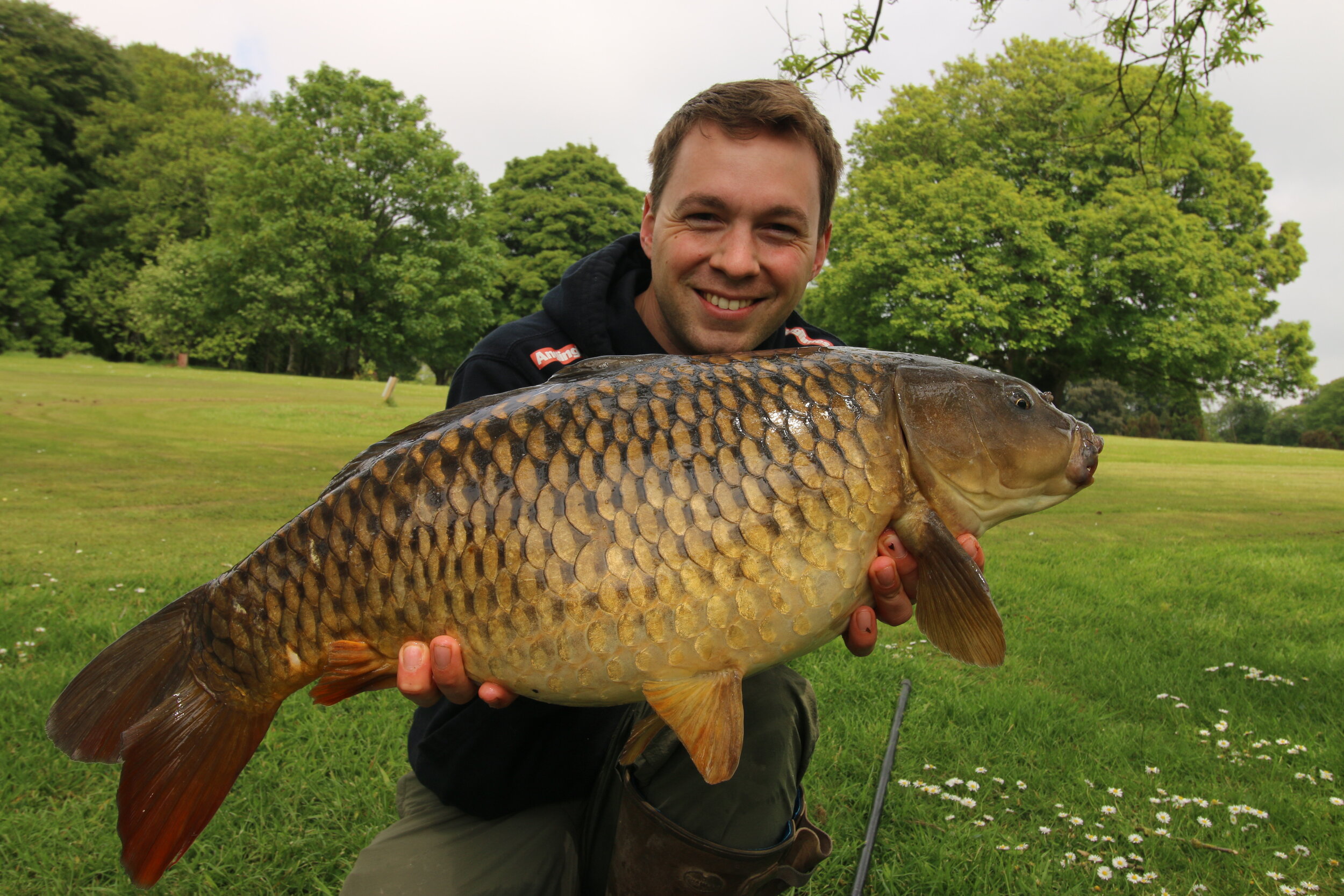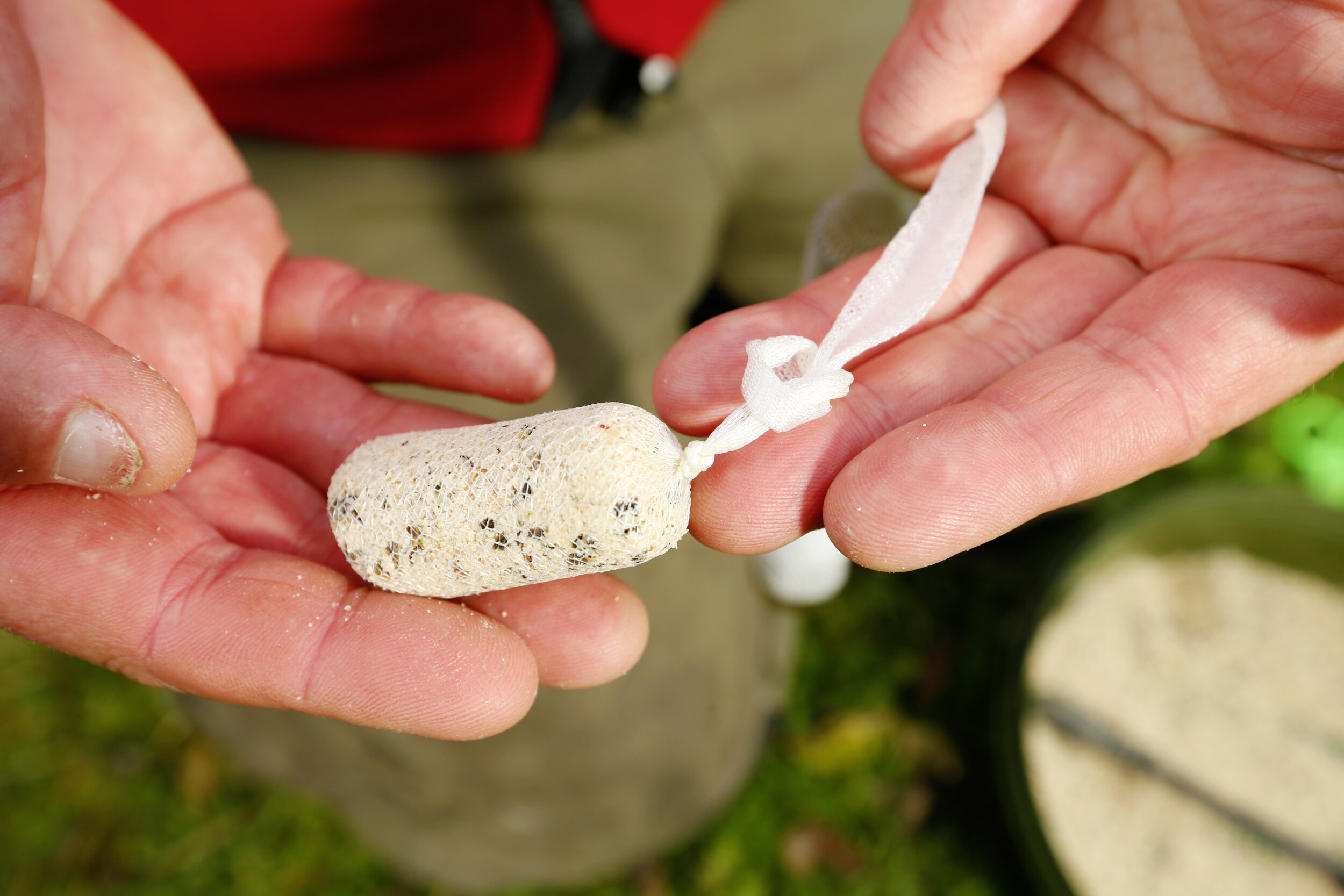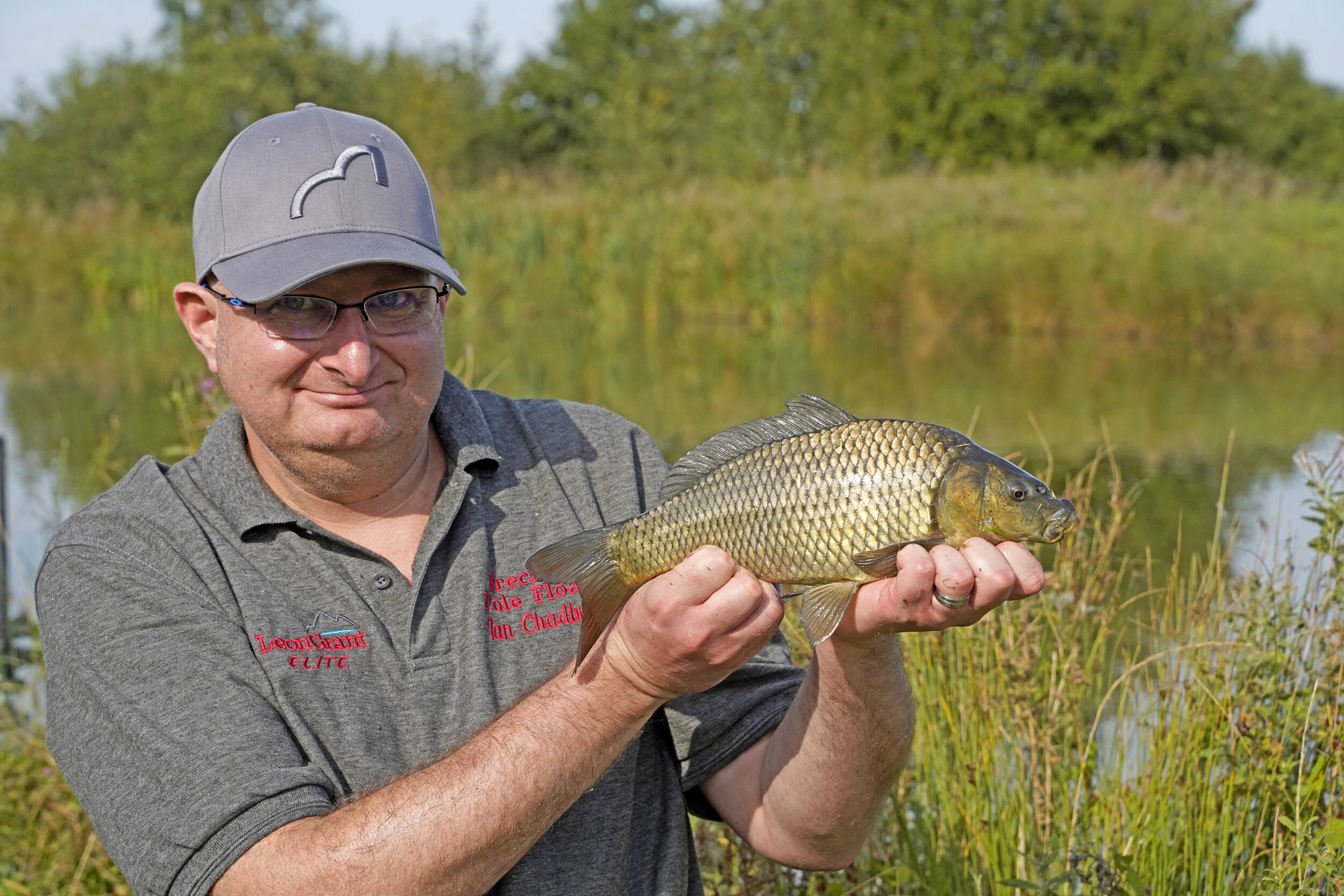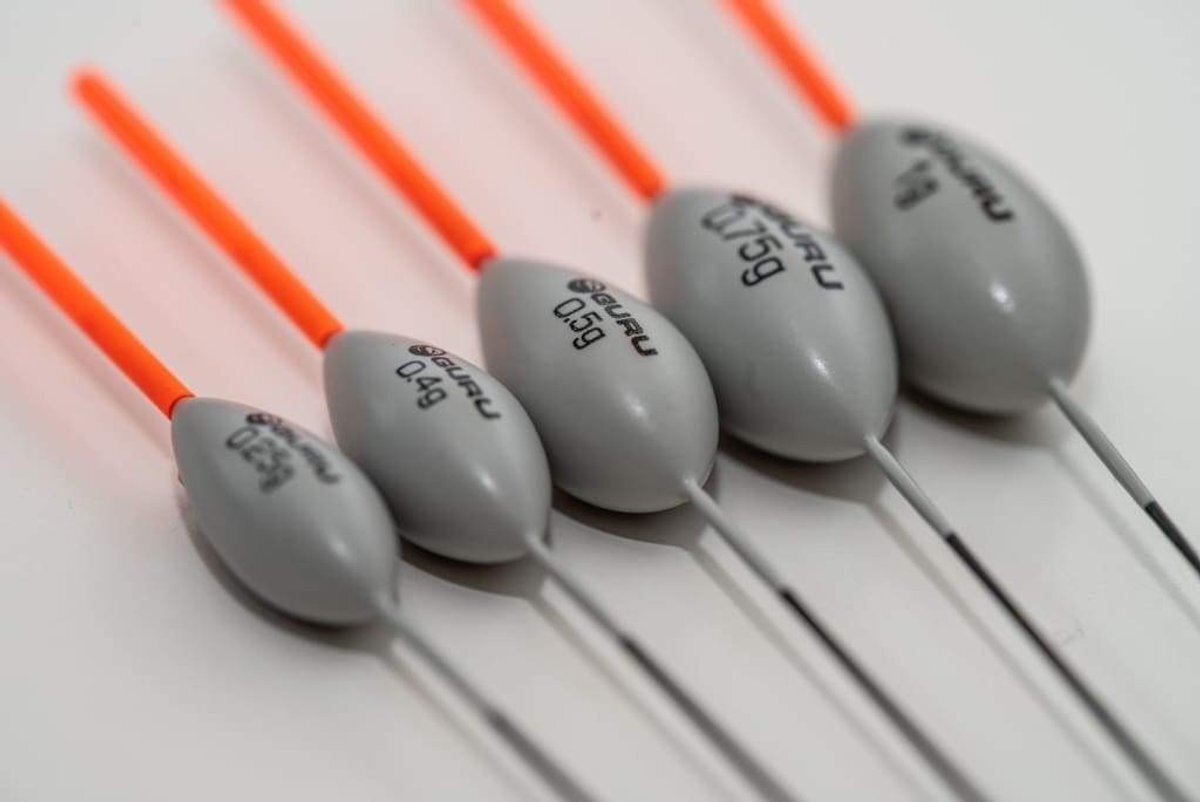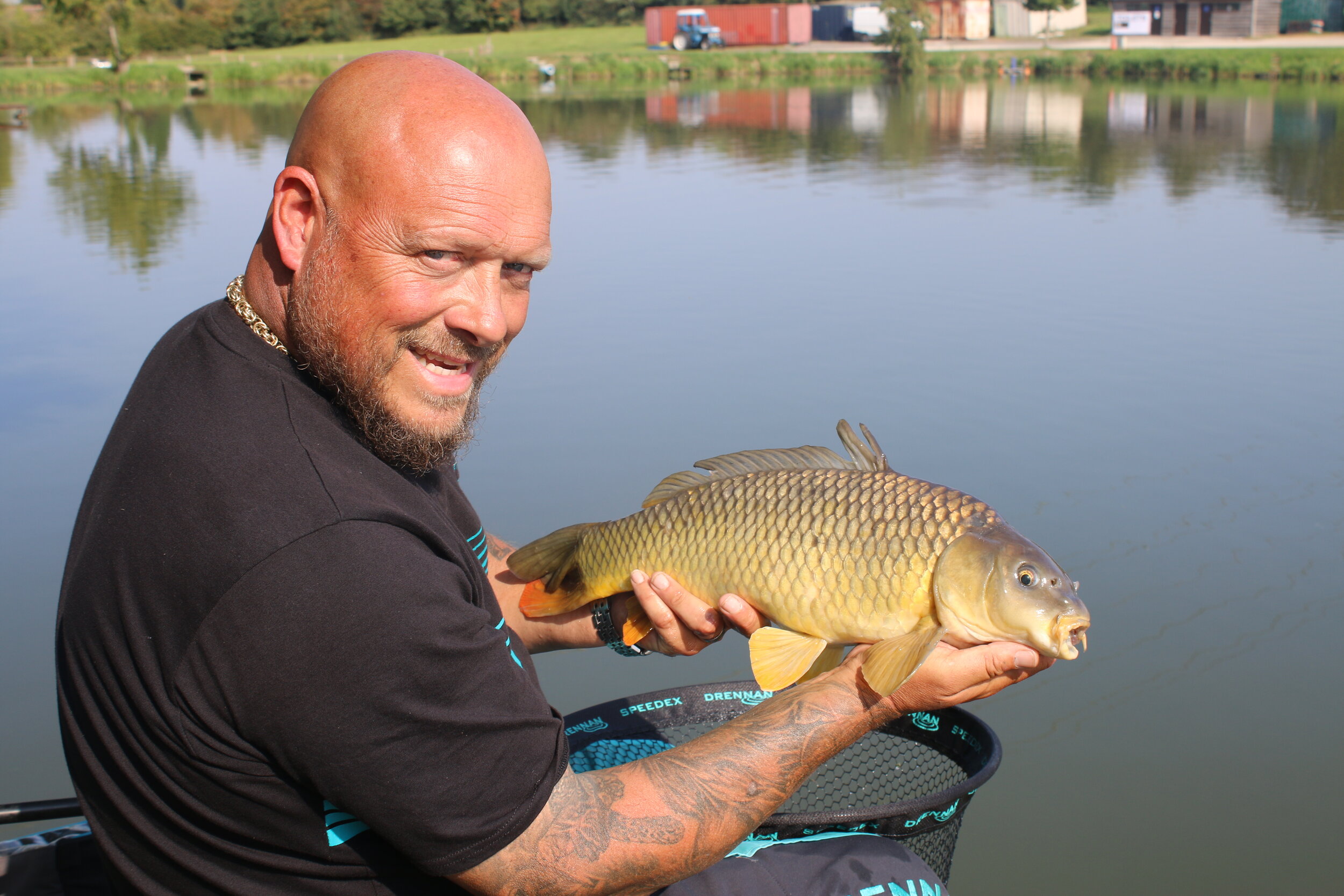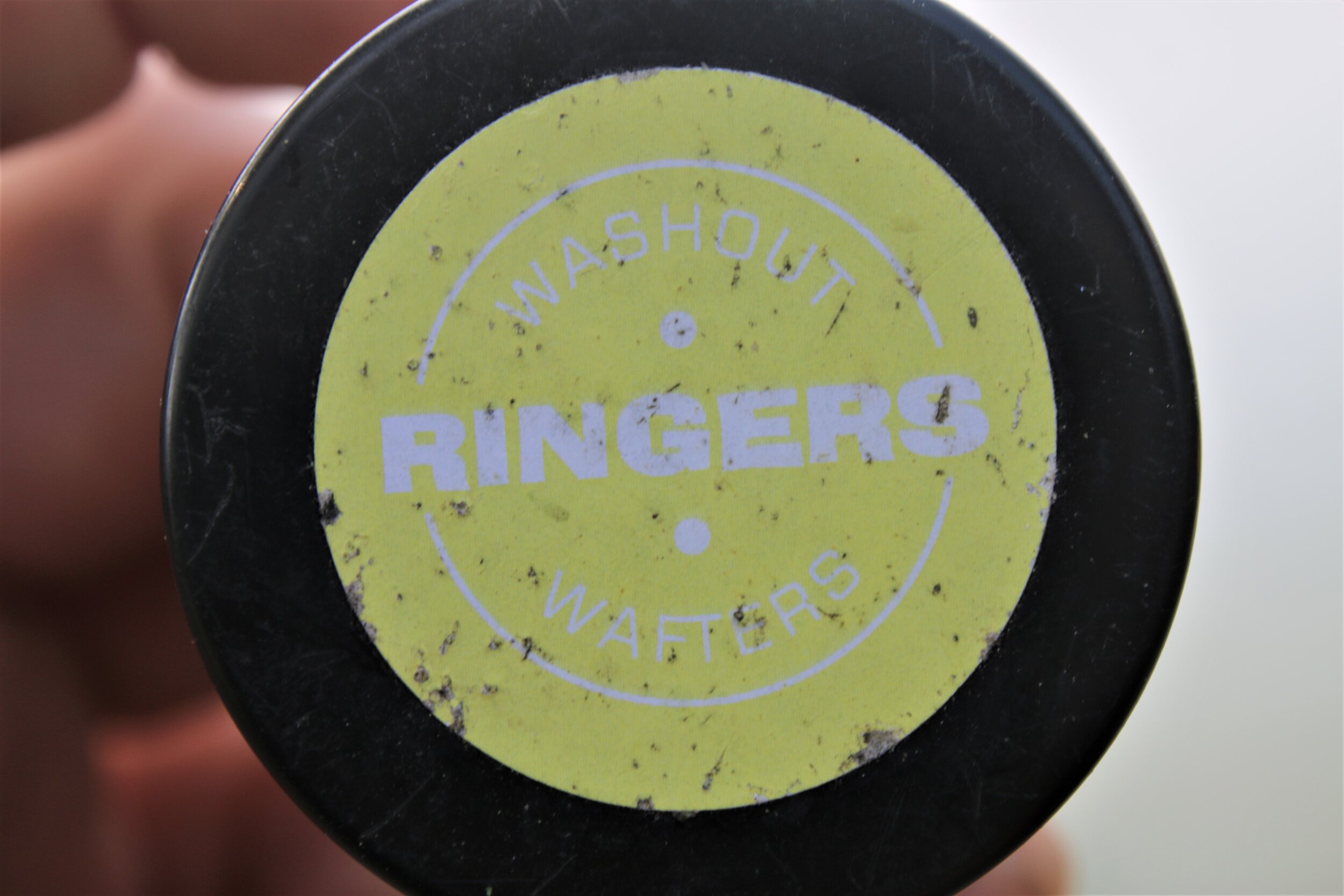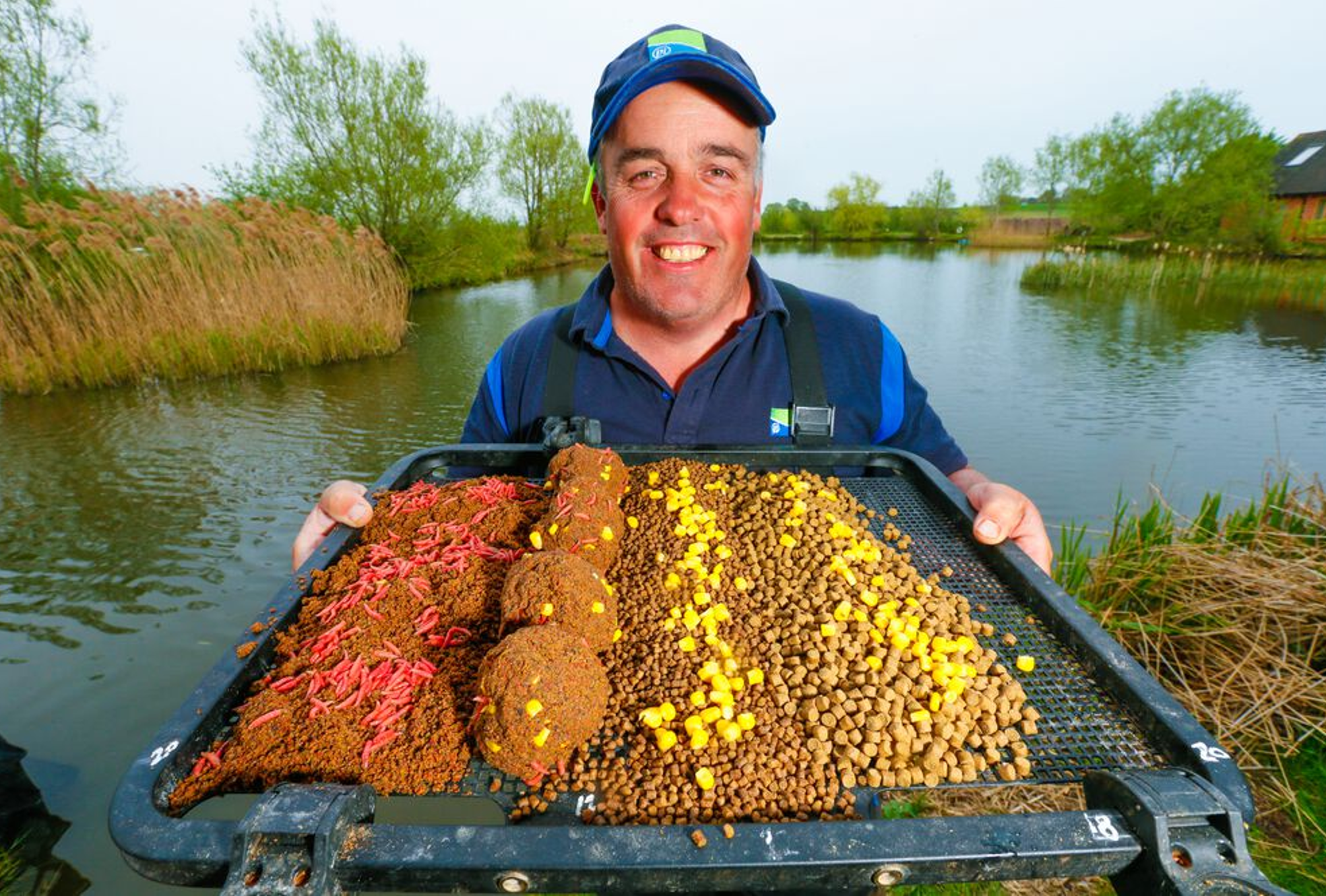Commercial Fishing Tips | Catch more silvers on chopped worm - Steve Ringer
ALTHOUGH I think we’re past the window in the year when chopped worm works for big carp, where silverfish are concerned it’s still a vital bait to have to hand.
We all know perch love worms, but so do roach and skimmers. If I was fishing a venue with a real mix of fish in it, such as Lambsdown Lake at Meadowlands Fishery, worms would always play a part – not however, when fed on their own!
Instead, I try to combine worm with groundbait and other goodies like casters and dead pinkies. Few people can deny the pulling power of chopped worms. The juices that leak off pull fish in quickly, but this is a feed that you need to go steady with.
Feed too much and worms in cold water can put the fish off. By introducing only a small taster of finely-chopped dendra worms every time I feed on the pole, or cast a feeder, I’m in a position to work out how well the fish are responding, allowing me to increase or decrease the amount of feed.
Chopped worm is a vital bait for silvers in the colder months
RIDDLE OFF THE SOIL
I want worms soil-free. I’ll riddle off the bulk of the soil and then pop them in a tub. The worms will ball up, pushing off excess soil.
Riddle excess soil off your worms
MAKE A MUSH
How finely you chop worms is dictated by the size of fish I’m after. Big fish need a rough chop, but smaller fish need a minced-up mush.
For smaller silvers, try to create a worm mince
START WITH A PINCH
Bream love worms, but sometimes not in the cold. I’d start with just a pinch of choppie inside a ball of groundbait or in the feeder.
Just a pinch is enough to add attraction to groundbait
CHOP SOME CORN
I’m a big fan of the colour yellow for bream, so I’ll chop up some corn to add to the mix. This puts small flecks of colour into the swim.
Corn and worm is a deadly combination
Commercial Fishing Tips | Six tips to get the most out of soft pellets - Lee Kerry
It's time to make the seasonal switch to soft pellets! Here are six tips to get the most out of them…
SOAK THE FEED PELLETS
My No1 cold water feed pellet is a soaked 2mm. Referred to as micros, I soak mine heavily, submerging them in a Pellet Wetter for three to four minutes so they dissolve as the fish eat them.
2mm micros are a perfect winter feed
MIX UP HOOKBAIT SIZES
You can’t beat an expander pellet on the hook. A 4mm bait is the optimum size, but I have a mix of 3mm, 4mm and 6mm expanders on the go and change them depending on the size of fish I’m catching.
Carry a mix of expanders
HOOKING EXPANDERS
I like to thread the hook fully through the pellet, getting as much hook into the bait as possible. This makes it less likely that the hook will pull out of the bait when you strike or lift and drop the rig.
Try to get as much hook into the bait as possible
THE RIGHT RIGS
When fishing pellets, you need complete control of your bait. I use a maximum of a 4ins hooklength so that as soon as a fish picks up the bait, the bite registers on the float, even if the indication is tiny.
You need the bite to register on the float as soon as the fish picks up the bait
BALANCE YOUR KIT
The lighter the hooklength you use, the more bites you’ll get. I love the Preston Innovations 9h Hollo elastic, with a stiff mainline such as 0.18mm Accu Power, but hooklengths down to 0.10mm if required.
The lighter hooklink you use, the more bites you will get
THEY MIGHT NOT WORK!
Sometimes soft pellets won’t catch that well. If you’re on a difficult water, then soft pellets are a good choice. However, if you are getting lots of fish you don’t want to target, go for a hard pellet or corn.
If you are getting lots of bites from small fish, try switching to hard pellets or corn
Feeder Fishing Tips | Why you need to hair-rig worms - Adam Wakelin
Hair-rigging makes the worms sit better on the hook and stops them folding over the hook on the strike, so there are a few good reasons to do it, especially at this time of year.
I fish a hair rig with a bait stop and thread on the worms with a baiting needle - it’s dead easy to master if you practise.
What size worm to use is the next decision. One or two whole dendras are great for big bream but, as things are going cooler, I scale back to two halves or sections of worm.
Hair-rigging worms stops them folding over on the strike
Specimen Fishing Tips | Live or dead baits for big perch? - Rich Wilby
Big perch, especially in waters that contain no pike, live on small fish, making these a very selective bait.
Perch get big from a diet of small fish
On most venues where the method is permitted, a small livebait around 4ins long is a superb perch bait.
The perch paternostered float live bait rig
By comparison, deadbaits often – but not always – come in a poor second.
That said, lip-hooked deads fished ‘sink and draw’ style can produce the goods on some days.
I’d always go with a livebait where allowed, though!
Livebaits are the number 1 bait for big perch
Feeder Fishing Tips | 5 tips for bream on the feeder
Milder weather means one thing – bream! There’s no better way to catch them than on the feeder!
Vary the feed
Once you start fishing, try to judge how many fish are in the peg by the bites or indications you’re getting. If that’s not very many, it may be worth cutting back on the number of freebies going in through the feeder. There’s no point piling in more and more bait when there aren’t many fish there in the first place.
Let the fish tell you how much to feed
Big hits of bait
Making several quick casts at the start of the match will get some bait into the peg, but don’t bother doing it with the feeder you’re going to be fishing with – these are too small and will take too long. Instead, invest in a baiting-up feeder with a much bigger capacity. Between six and eight loads of bait are ample, using groundbait and a scattering of casters, dead maggots and pinkies, finely-chopped worm and a few bits of corn.
Baiting up feeders are a good way to kick off the swim
Watch the clock
Top bream anglers will always have a stopwatch by their side to time how long each cast is left out in the water. This is to try and work out when a bite is likely to come – if, for instance, you are getting most of your bites within 10 minutes, there’s little point in leaving the feeder out for longer than this.
Time how long you leave the feeder in
Redworms are autumn kings
Worms will still work their magic at this time of year, but on tricky venues it’s worth sourcing some redworms for the hook. These tiny worms are loved by bream, especially skimmers, despite their smaller size. Two or three fished on the hook make a brilliant bait, tipped off with a dead red maggot.
Redworms are a deadly bream bait
Add some colour
In clearing water, certain colours of bait and feed work really well for bream, with yellow the best of them all. Corn or a small yellow wafter or boilie catch loads of fish and you can also pep up your groundbait by adding Pastoncino. These small pieces of biscuit come in bright yellows and reds and just a handful stirred into mixed groundbait puts lots of little flecks through the feed for the fish to pick out when feeding.
Adding some colour can really boost results
Carp Fishing Tips | Go carping on a budget! - Chris Haydon
CARP fishing can be a seriously expensive business at times.
Buying a decent amount of boilies, a ticket for your local bag-up water and all the components to tie the latest rig – it all soon adds up. Fear not, though, as there are numerous things you can do to save a few bob, without compromising your catch rate.
Here’s how to do it...
Going carp fishing doesn’t always have to mean spending lots of money
Get on a club water (£30-£150 per year)
Day-ticket venues may hold some giant carp but they’re often busy, and if you fish them regularly you’ll end up spending a small fortune on tickets. So, why not check out the quieter club waters?
Many annual club books will only set you back the price of a long session on a day-ticket water, and they often hold carp of equal quality. The banks will be a lot quieter too!
Club books are great value for money
Use the ‘golden grains’... (As little as £1 per kilo frozen)
When used correctly, sweetcorn can out-fish all other baits. It’s widely used in spod mixes, but not on the hook for some reason, making it a bit of an ‘edge’. You can feed a lot of it too and it won’t fill the carp up. In fact, the more the better – they love it!
Sweetcorn is a deadly bait for carp. It’s cheap, highly visible and easily digestible
Ready, set, GO! (£1.99 per rig - cheaper options available too)
We all have shedloads of end tackle in our bag which, if we are honest, we hardly use.
If you are going to try a new rig, buy a ready-tied version first to test it out. All the major brands make ready-rigs now and it not only saves time, but also money on components you may never use again.
Ready-rigs are a quick and easy solution to test the latest wonder rig, without forking out on expensive components
Make a little go a long way (1kg of boilies = £9.99 - £12.99)
There is no denying that some of the boilies on the market are phenomenal fish-catchers, but that doesn’t mean you need to pile in kilos of them. Make your boilies go further by using halved baits. Simple!
Chop those boilies to put more baits out in the swim and let their attraction leach off quicker
Cook your own particles (£30 for £25kg from most pet food suppliers)
Bulk-buying raw particles such as hemp, pigeon conditioner or maize is an excellent way to save money. The baits must be soaked for at least 24 hours and then cooked until they split, so they are safe for the carp to eat. You can also add all kinds of ingredients to spice them up. A real no-brainer in the cost-cutting stakes.
When done correctly, cooking your own particles is a real money saver
Lavish TLC on your hooks (Hook file from £4.99)
Just because a hook on a rig has gone blunt, that doesn’t mean it deserves the bin. A little TLC with a hook sharpener should bring it back to life, saving you cash in the process.
Hooks can be brought back to life with a little touch up
Try bread bags (£1 a loaf, will last you a session)
Breadcrumbs in a mesh bag make a great alternative to pellets or boilie crumb. Combine them with a bright pop-up for a real cost-effective winner in the colder months.
Bread crumb in PVA bags is a deadly winter tactic, when minimal feed is required to get a bite (Photo - Mark Parker)
Use fantastic foam! (From £3.99)
When the air pressure is high and carp are up off the bottom, zig rigs can be deadly.
Other than a hook and hooklink, the only thing you need to get a bite is coloured foam. You can flavour it if you wish, but unflavoured foam has taken some of the biggest and best carp in the country, crazy as it may sound.
Foam has caught some on the country’s biggest carp (Photo - Matt Woods)
Recycle your old rigs (FREE)
At the end of a session, don’t just cut off your rig and dump it in the box. Snip off the hooks, swivels and rig sleeves and use them again.
Reverse your mainline (FREE)
Instead of respooling each season just reverse the line on your reels by loading it onto a spare spool, and then pop the spare spool back onto your reel. The used line will then be on the bottom, and fresh stuff on top.
No need to throw away fresh line, just reverse it onto your spare spools
Fish dawn to dusk (FREE)
Night fishing means buying a bivvy, bedchair and sleeping bag. Instead, get up early and to the lake before first light. The fish generally will be showing, and you can jump right on them while everyone else is snoring!
Night fishing can often be unproductive on some waters, just get up early and stay late
Buy cheap, buy twice! (PRICELESS)
Make savings elsewhere, but it’s vital your rods and reels are up to the job. See if your local tackle shop will do you a deal. You only need two rods. You will then only need two alarms, two sets of sticks and a two-rod licence too. Big savings!
Having good quality rods and reels will ensure you land more fish. You only need TWO!
Commercial Fishing Tips | Time to get the most from natural baits - Ian Chadburn
In an age of pellets, paste and wafters on commercials, it’s easy to leave good old maggots and casters in the tackle shop fridges for the river and canal anglers. After all, maggots only attract little fish – and who wants to catch those?
As we start to experience colder weather, the answer to this question should be ‘everyone’. We can all recall days out when the carp haven’t played ball and you come off the bank with little to show for your efforts using baits like pellets.
Natural baits will still catch plenty of carp
As the weather and water cool, fish don’t feed as strongly or for long periods of time. This means you’re left with long gaps between bites, gaps that can easily be filled by adopting a natural bait approach with maggots and casters.
There’s not a fish swimming that won’t eat maggots, so you can never be sure what you’re going to hook when the float goes under. The natural route shouldn’t be limited to just maggots and casters either – worms and hemp also work.
Slow periods can be made busy with natural baits
Use groundbait
Keep one line reserved for big fish, feeding it with groundbait and corn. Depending on the depth, feed the groundbait either loose in shallow water with a silty bottom, or as a ball in deeper pegs with a hard bottom.
Groundbait should be fed on the big fish line
Catch them all
While you let the big-fish lines settle, fish for bites with maggots. These could be from a 2oz roach to a 10lb carp just 5m or 6m out. Throwing in around half-a-dozen maggots every drop-in will keep a steady stream of bait going in.
Keep feeding maggots in close to keep action coming
Little & large floats
On the maggot line, a slim float taking around 0.4g will let you fish with the bait falling through the water. On the long pole, big-fish agenda, this is upped to a 0.6g rugby ball-shaped pattern for stability.
Have several rigs ready
The baits to use
All you need are maggots, casters, worms, hemp and corn. Maggots, casters and worms are the main hookbaits, hemp and corn coming into play as feed. A couple of pints of each will be ample.
A selection of natural baits
Fish the margins
Until the first frosts strike, the margins are a great place to catch later in the day. Forget about finding 12ins of water... 2ft 6ins-3ft is what you’re after. Depth is more crucial than cover from reeds and lily pads.
The margins will still produce until the first frosts
Use your time wisely
Treat the big-fish lines as somewhere to have a look at now and then. The maggot line will be where you should spend most of your time. A maximum of 10 minutes is all you need on the big-fish lines.
Don’t spend too long waiting for bites on the big fish line
Canal Fishing Tips | Should you loosefeed over groundbait? - Matt Godfrey
On the deep shipping canals of Yorkshire that I fish, loosefeeding over the top of groundbait actually defeats the point of what I’m trying to achieve. I want the fish to be firmly on the bottom, feeding on the groundbait and giving me a focal point over which to put my rig.
Firing in casters or maggots runs the risk of spreading the fish over a wider area and even coming off bottom, so I wouldn’t use a catapult at all. Instead, I’ll cup in two to four balls of groundbait, the amount depending on how many fish I feel are in the area and how good the peg is, topping up with a ball the size of a large walnut when bites fade or I begin to catch small fish.
On deep canals a groundbait only approach is the way
Commercial Fishing Tips | Time to switch to corn - Steve Ringer
I’m sure we’ve all felt the chill in the air every morning, a sign that autumn is here and, with it, falling temperatures!
As far as fishing is concerned, this signals a changeover period from the methods and baits of summer to something a little more refined to ensure you keep on catching.
Water clarity will improve as colour begins to drop out of the water and fish, especially carp, will start to feed as much by sight as via their other senses.
With this in mind, hookbaits and feed need to be something that stands out, something that the fish can find quickly and easily. To my mind, there’s one bait that is king of them all – corn.
Super-soft and bright yellow, no fish can miss a few grains lying on the bottom and when all else fails, I know slipping a piece of corn on to the hook will give me a much better chance of a bite or two.
To my mind, there’s one bait that is king of them all – corn.
Big potting
How I feed depends on the species being targeted. If it’s a mixed lake, I’ll use a big pot to feed more, but if it’s just carp I’m after I’ll use a small one and feed for a single fish at a time.
If there are lots of species present, feed a big pot of corn
Hooking corn
As we move into autumn, I want to leave less and less, hook on show while leaving the hookpoint clear. I hook a grain through the rounded end so it will stay on the hook if I miss a bite.
Mask the hook as much as possible without covering the point
The right floats
Corn is a visual bait and fish will follow it down to the bottom. That makes using a float on the light side crucial iin order to give the corn a slow fall. The 0.4g Guru Wire Pinger is the ideal pattern.
A light float will aid the slow fall of the hookbait
Go for a light hook
To help with the slow fall of the bait, a light hook makes things look as natural as possible. The Guru Super LWG is my main corn hook, although a Kaizen is a good second choice.
Use a light hook too so the bait looks natural
Commercial Fishing Tips | Why meat is the bait at 6m - Grant Albutt
We’re just into autumn now and that means a little window of opportunity for meat to begin working on commercials. During summer, this bait takes a back seat to pellets, but when temperatures fall, there’s no better bait for carp, F1s, bream and skimmers.
Switch to meat when the temperatures fall to keep the carp coming
Whether you fish rod and line or the pole, meat works on them all, but there’s one particular part of a swim where fishing meat really gets results and that’s on the short pole line. Here are six tips on how to get the most from this deadly bait…
Hook meat correctly
Bury as much of the hook as possible, but leave a bit of hookpoint showing. My hook for meat fishing is the Drennan Wide Gape Carp in a size 14.
Bury as much of the hook in the meat as possible
Get your timing right
The final few hours are the time to fish meat short. Generally from around 1.30pm to 2pm is when I’d begin to concentrate fishing here.
Time when you will start fishing the meat
Work the rig
Working the rig always pays off with meat. To do this, I simply lift the float 6ins out of the water and lower it back in every minute or so.
Lift and drop is a tactic that works well with meat
Cube sizes
Using a meat cutter will save you lots of time and also ensure that each cube is of a uniform size. For a mixed bag, 6mm cubes are best.
Meat cutters
When colours work
I normally use plain-coloured meat, but coloured baits can have their day. Bream and skimmers love yellow baits and red can also get results.
Coloured meat can work very well for skimmers
Find the right line
The 6m line equates to around five sections of pole, but the actual distance is dependent on the depth. I’m looking for between 4ft and 6ft of water.
Look for 4-6ft of water to fish meat in
Match Fishing Tips | How to prepare bread for punch fishing - Ray Malle
You can use bread straight from the bag, but I much prefer to ‘steam’ the slices first at home.
This results in a tacky bread that stays on the hook if I miss a bite and, at times, I have caught two or three roach on the same piece.
To steam it, I remove the crusts from the bread, microwave a slice for a few seconds and then wrap it in clingfilm to seal the moisture in. I then zap another slice and fold it into the clingfilm and so on, ensuring each slice is moist.
I then remove one slice at a time on the bank. Bread prepared this way very seldom falls off the hook.
Steamed bread is a great bait for roach
Commercial Fishing Tips | When to use which bait colour? - Steve Ringer
If you’re anything like me, you’ve got tubs full of hookbaits in a range of colours – but how many of them do you actually use?
Which colour hookbait to use is down to water clarity
Confidence in a hookbait plays a big part and it’s easy to keep picking out the same one, working on the assumption that you caught on it last time, so why would it be any different this time round? Nothing wrong with that, but bait companies make different-coloured wafters and hook pellets for a reason – they all have a time and place!
Which colour to use is down to water clarity. In coloured water, some colours can be seen better than others. On the flip side, gin-clear winter swims call for a different bait that stands out easily.
Take the Ringer Baits Chocolate Orange Wafter. This has caught me hundreds of carp and bream, but it won’t always be the one I go for. First I will find out what colour works best at the fishery I’m visiting. I’ve had too many sessions where a yellow bait outfishes all others.
I’ve broken the options down into my four main colour choices, but do experiment.
A bright green bait that’s been sat in a tub for months might just catch you one a chuck when nothing else is working!
Fluoro yellows & whites
These are the ones to go for in clear water or in winter. Yellow is especially good, as it’s the same colour as corn, another top clear-water bait.
Yellows and whites are a great clear-water bait
Fluoro pinks & oranges
These are best on heavily-coloured fisheries, mainly for the silhouette that they make. The shadow is easy for fish to pick up.
A flouro pink or orange is best in coloured water
Natural
Natural brown hookbaits work in summer when I’m feeding a lot of pellets. A plain hookbait ‘matches the hatch’ of my feed.
Dull browns work best in the summer months
Washed-out
These baits are very dulled down to look as if they’ve been in the water for ages. Washed-out yellow wafters are a real winter favourite.
Washed-out yellow is another winter winner
River Fishing Tips | How to bait for barbel - Dai Gribble
I prefer a bait dropper over making lots of casts with a feeder because it’s accurate and often much quicker too.
A bait dropper is a quick and accurate way to feed a barbel swim
I bait up with different-sized pellets and a few crushed boilies. The pellets keep the fish in the swim for long spells while the crushed boilies give them a taste of my hookbait.
Use a real mix of pellets to keep the fish in the swim for longer
Crushing the boilies releases lots of flavour. I’ll introduce around a pint of mixed barbel pellets and 30 crushed boilies, the exact amount depending on several factors…
The size of the river - The bigger the river I’m fishing, the more bait I will use.
Large well stocked rivers like the Wye, Trent and Severn require heavier feeding
Stock of barbel and other species - if I know there are a lot of barbel, chub, or even silverfish such as roach I will up the amount of feed I put in at the start.
If there are lots of fish they will need more feed
Temperature - As temperatures drop towards autumn, I will scale back on the amount of bait being fed.
Scale back the feed as temperatures drop
How long I am fishing for - The longer my session, the more feed I will introduce.
If you are fishing a long session, try a bait and wait approach
River Fishing Tips | Chub fishing at night? - Phil Spinks
I’ve found fishing after sunset to be much better for chub, especially if the water is very clear, and the secret to catching chub after dark or in coloured water is to use a stinky bait like cheesepaste.
Everything you need to make a stinky cheese paste
I don’t feed much, maybe a few lumps here and there.
If there’s a chub in your swim he will be on the paste in a flash, so if I don’t get any action within 25 to 30 minutes, it’s time to up sticks and move to another swim!
It doesn’t take long for cheese paste to get found by greedy chub
Cover as much water as possible and if your stretch has a good number of chub, you can be certain of a few bites. So, don’t fear the dark, the chub will still feed, you just need something they can sniff out!
Commercial Fishing Tips | How depth should dictate your margin feed - Des Shipp
JUST about any bait has the potential to work in the margins, but there is one factor that should dictate what you use – the depth.
Pinning the fish to the deck is imperative for this style of fishing. If they are tempted to come off bottom then you will experience line bites, which will lead to you foul-hooking fish.
With this in mind, you need to use baits that will get down to the deck and not create much of a cloud. At the same time, you don’t want to give them loads of loosefeed as this will increase the amount of time it takes for the fish to take the hookbait.
Around 18ins is the ideal depth, but there are times when no matter how much you search the margins, it’s impossible to find it. Therefore, the depth I find will dictate the baits that I turn to. I have worked on four bait combinations, and each performs best at a certain depth.
These pairings have worked well for me, and I’m sure that they’ll do the same for you!
Four bait combinations for the margins, each performs best at a certain depth.
1ft-deep swim
Fish won’t come up off the deck in this depth because it is simply too shallow. Use loose groundbait and dead maggots – a low-feed combination with loads of attraction!
2ft-deep swim
In this depth fish are tempted to come off the bottom for loosefeed. Use sweetcorn and maggots laced in balls of lightly squeezed groundbait to prevent a big cloud forming.
3ft-deep swim
Groundbait in any form can cause problems at this sort of depth. Heavier baits such as 4mm pellets and sweetcorn sink fairly quickly and will keep the carp down on the deck.
4ft-PLUS swim
Some fisheries have deep margins, and 6mm or 8mm pellets are needed. They will sink quickly and stay firmly on the deck, even when carp are charging around.
Consider your feed choice when margin feeding
Commercial Fishing Tips | How to fish meat in shallow water - Pete Upperton
I’ve had lots of success using meat ‘slop’ in shallow water. In deeper swims, standard cubes will be better due to their heavier weight.
What I like about slop is it creates a cloud and gives me more pieces of feed for the relatively small amount that I’m putting in. By that, I mean that if I fed just eight 8mm cubes, one carp could eat the lot and swim off.
Slop creates a cloud
By using slop, there are hundreds of pieces in the swim and that makes the fish stay in the peg longer. I use a meat grinder to put the luncheon meat through, which makes slop much quicker than trying to force it through a riddle.
I use a meat grinder to put the luncheon meat through
It will catch you plenty of carp - give it a go!
River Fishing Tips | What does it mean when fish cough up bait? - Darren Cox
Greedy species like perch and chub tend to regurgitate bait the most, but I’ve had roach and dace do it too.
When it happens, it tells me two things…
Firstly, that the fish are ravenous and eating well and secondly, that there may not be that many fish in the peg as the ones I catch are eating everything I’ve fed.
In this situation I then feed less bait, meaning there’s more chance of my hookbait being taken by the few fish that are present.
Fish coughing up bait can be a sign you need to limit the feed
River Fishing Tips | 5 tips to catch more roach on hemp
The prime time to catch big river roach on hemp is now! Here are five tips to help you get the most from the seed…
Regulate your feeding
No two days are ever the same when it comes to feeding hemp. A little and often loosefeed approach works on some rivers, while others respond to feeding larger amounts with a pole cup and then fishing over it. The standard approach, though, is to loosefeed with a catapult, around 20 or 30 grains of hemp each time and, using a slow-falling rig, catch fish as the bait settles. If the roach show signs of coming up in the water to get to the loosefeed, break out the pole cup and get them back on the bottom with
a good helping of hemp fed in one go.
Every day is different when it comes to feeding with hemp. Watch how the fish behave.
Stop nuisance ‘shot bites’
A normal pole rig for fishing hemp consists of a light float and small shot strung evenly down the line to give the hookbait a slow fall. Sometimes, though, fish grab those shot, mistaking them for grains of hemp. So switch to cylindrical styl weights instead. The slow fall of the bait is still guaranteed but there’s no longer a danger of the fish grabbing them.
Look out for fish taking the shot instead
Hook it right
MANY anglers have difficulty in getting hemp to stay on the hook. But it’s easy when you know how. There are two ways to hook hemp, but first ensure the grain has a full split in its side but isn’t falling apart. The quickest way is to push the bend of the hook into the split so the sides of the grain grip the hook point and shank. You’ll get a more secure hookhold by punching a hole in the flat end of the grain with a baiting needle and threading the hook point, bend and shank through until the seed hangs off the bend. You can catch several fish on the same grain before it will need replacing.
There’s no need to struggle hooking hemp
Switch hookbaits
Hemp isn’t the only option you have to put on the hook. When the roach are present in numbers, bigger fish can be picked off using tares, and on some rivers even elderberries will catch their share! Tares are a hard particle used as pigeon feed, but when cooked they turn soft, are easy to hook, and have the knack of catching the bigger roach in a shoal. Don’t spend too long fishing them without bites, though, as you’ll either catch quickly on them or not at all. Elderberries are an old-fashioned bait rarely used today, but especially on rivers where elderberry bushes line the banks, the berries are eaten by roach and slipping one on the hook might just mean lift-off for the peg!
There are some great alternative baits to fish alongside hemp feed
Use small floats for a slow fall
To create that slow fall of the bait with the small strung-out shotting pattern, the pole float you use needs to be on the light side. You’re not after stability from the rig when fishing hemp, so even in 10ft of water, a 0.5g slim-bodied float will be ample and, in shallower swims, you can go even lighter.
You want the bait to fall slowly through the water with hemp, so use as light a float as you can get away with
Pole Fishing Tips | Six feeding tips for silvers on natural venues - Josh Newman
Little-and-often is a tried and tested way of feeding for silverfish, but there are occasions in summer when a bolder approach is required.
Be bold with your feeding for summer silvers and you will catch more
Feed heavily to start
At the start I’ll throw in 14 large balls of the groundbait and leam mix. This sounds a lot, but I won’t be feeding any more of this mix, so I need a good amount to try and keep the fish in the peg.
Kick off the swim by balling it in
Top-up with more
When I think the effect of the cloud from balling in has finished, it’s time to add more feed with a pot. This is a mix of damp leam and grey leam (half a bag of damp to just 25ml of grey), plus particles.
Top-up with more feed when you think the initial balls have had their effect
Keep loosefeeding
Loosefeeding hemp is important. It not only gives me the chance to catch on it late in the day, but it also keeps on drawing fish into the swim by having something falling through the water all the time.
Steady feeding with hemp will keep fish interested
Set up Multiple rigs
Because of the cloud, I can catch fish 6ins off bottom and then switch to the deck later. One rig won’t do both jobs, so I set a couple up. Both are Sensas Avon floats with a 0.8g for fishing off deck and then a 1.25g pattern for down below.
Multiple rigs will ensure you can catch fish at all layers
Dot your float down
The less float bristle you have on show, the more bites you will hit. Trying to shot a float with small split shot is tricky, so I use micro styls. I’ll shot the float as normal, then add four or five tiny styls to leave just a speck showing.
Dot your float right down to hit sensitive bites
Try ‘Short’ elastics
In deep pegs of over 10ft, you need a strong elastic to set the hook. Running elastic through a top kit would require around a No6, which is too heavy. My solution is to use a length of No4 elastic through just the tip section of the kit.
A light elastic through just the tip section will land you more fish
A cracking net of natural water silvers
Commercial Fishing Tips | Ready your pellets with Steve Ringer
Given the range of pellet sizes, shapes and colours on the shelves of tackle shops, it’s easy to see how anglers can get confused about which is the right one to use.
Years ago, life was a lot easier. We had plain brown pellets in just a couple of sizes but now we’ve got micros through to big 10mm ‘donkey chokers’ and colours from bright yellow to black. You’ll get bites on them all, but some will be much better than others – if you know which ones!
I tend to use just a couple of sizes – micros and 6mms – for much of my summer pellet fishing, and I stick to plain-coloured baits. Most carp and F1s are reared on plain pellets, so they see them as part of their diet.
Having an edge, though, is important and that’s where colours come into play.
On some venues, I’ve struggled to catch on a brown pellet but emptied the lake by changing to a red one. Swapping sizes can also have a big effect. Experimentation is key, but getting the basics sorted is the first thing to get right.
Micro pellets
At this time of year micros won’t get to the bottom due to small fish. I will only use them in shallow water and on a Hybrid feeder.
Micro pellets are best used in shallow water or soaked for a feeder
Big pellets
The best all-rounders are 6mm pellets. Big enough to be loosefed on a waggler or feeder line, they make plenty of attracting noise.
The plop of a 6mm pellet is hard for a carp to resist
Expanders
Expanders are a great, light hookbait for carp and bream. The only time I’d feed them would be on shallow and very silty lakes.
Expanders make a great hookbait for bream and carp
Colour them
On venues where the water is heavily coloured, a red expander pellet will stand out that bit better because it creates more of a silhouette.
Colouring your pellets can be a real edge










